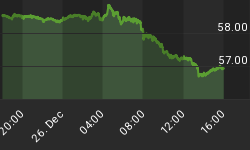Today, we will discuss the S&P 500 and its Relative Strength Index (RSI).
There are two things I like to look at on a Relative Strength Indicator ...
1.) Whether it is positive or negative, and 2.) Whether it is showing a divergence.
Let's look at the chart below and explore the RSI to the S&P 500.
In September and October of 2005, the S&P Index was moving down. Halfway into October, its RSI started moving up steadily. By November 1st, the Relative Strength (RSI) went above the 50% level and that started the S&P's up move that lasted until May of 2006 when the RSI went into negative territory again (below 50% strength).
In June and July, the S&P 500 made a double bottom low ... but the RSI was Divergent and moving up higher. The RSI made two attempts to stay above the 50% level and then after the 3rd. move, it solidly trending up. But ... from June to August, you knew the RSI was trending up. How? Because the RSI was making higher tops and higher bottoms the whole time ... which means it was in an up trend.
So, where is the RSI now?
1. It is still positive with a reading well above the 50% level.
2. Its strength peaked in October and the RSI has been moving divergently lower since then. How do you know? Once again, it was down trending because it has been making lower tops and lower bottoms.
As it has done this, it has also followed a very clear down Channel as seen by the red dashed lines. Each time the RSI has hit its channel's resistance, it bounced off to the downside.
It is now ready to test the channel's resistance level one more time during the next few days.
If the pattern doesn't change, then after a failure to break the resistance line to the upside, the RSI would move down to a lower low in strength with the S&P facing a higher level of weakness.
So, here is what you are looking for:
For a rally resurgence on strength, you want the RSI to finally break through the upper Channel's resistance and make a higher high. You would then want to see additional higher highs with higher lows.
If that doesn't happen, then you want to keep a careful eye on the RSI in case it makes a much lower low and moves below the 50% level.

















